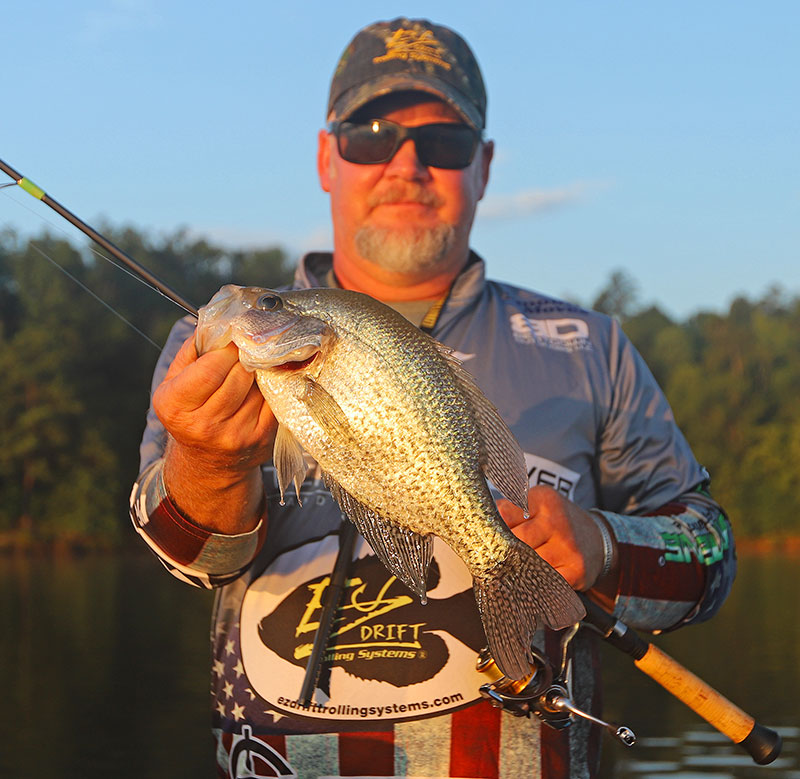
Fall crappie are concentrated on brush, timber
By this month in most lakes across the Carolinas, crappie have set up on a pattern they’ll stick with throughout the fall.
And anglers with that knowledge can catch all they want, as long as they trust their electronics and are willing to try different areas when the need arises.
Shaun McAbee of Southeast Crappie Alliance said this month, it’s all about finding crappie on brushpiles, standing timber, and other underwater debris.
“These fish have moved into some deeper water and are relating to cover. Finding that cover is the key to catching them this month,” he said.
McAbee fishes all over both Carolinas, and said the biggest difference in fishing different lakes this time of year is what type of cover is on each body of water.
“On some lakes, sunken brushpiles will be the main feature you’ll find the fish on. But my favorite lakes right now are in South Carolina’s Upstate, where standing timber is prominent,” he said.
In lakes like Russell, Clarks Hill and Hartwell, standing trees as tall as 40 feet are located in water that’s even deeper than that. McAbee likes fishing these better than brushpiles for one reason.
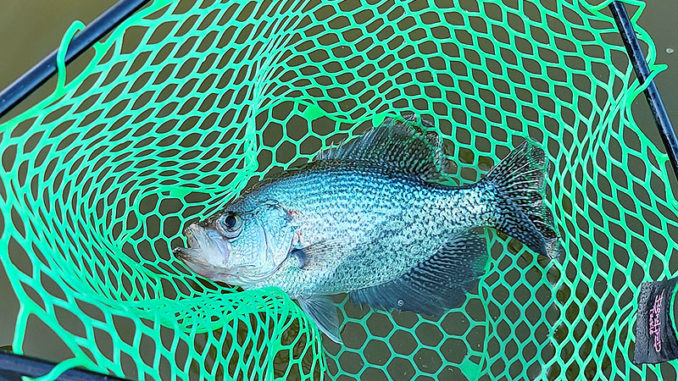
“It’s much easier to see the fish on standing timber. You’ve got these tall, thin trees that are easily identifiable on your depthfinder screen. And when fish are on them, they are just as easy to identify. With brushpiles that are usually big, but short masses that stick up only a few feet above the bottom, the fish can get lost in there, and can be more difficult to see on your screen,” he said.
Scale down

On standing timber, those fish can appear anywhere in the water column because they’ve got cover at all depths. And the farther they are off the bottom of the lake, the easier it is for anglers to see them on their electronics.
Even when the fish are easy to find with technology, it doesn’t guarantee they’ll bite. McAbee said one thing that helps with that this time of year is to downsize your baits.
“These fish can be tough right now because the water is still pretty warm. And the fish will eat for short periods of time. Smaller baits are more appealing to them, so I’ll scale it down this month. Jigheads in 1/16 ounce, 1/32, and even 1/64 are the sizes I use a lot right now,” he said.
Sometimes he uses a small jig body on those jigheads. Other times, he’ll use just a tiny minnow. And sometimes, he uses a combination of the two.
“Even though the minnow will give the bait a larger profile, which I try to avoid this time of year, it also adds smell and motion. Some days, that’s what it takes. Other days, it turns them off. It’s best to always be prepared with live bait, but knowing that you may not need it,” he said.
McAbee said jigs that take a step back in time are also good choices this month.
“You don’t see a lot of folks using hair jigs these days. But they can be deadly this time of year. They have a very subtle action that is slightly different from that of a conventional, soft plastic jig. And when fish are finicky, which is common this month, those subtle variations can make a huge difference in getting fish to bite,” he said.
Leave ‘em
On some days, no matter how heavily you stack the odds in your favor, you’re bound to find a school of fish that simply will not bite. And while many anglers have heard the phrase “never leave a group of fish to search for other fish,” McAbee said sometimes, leaving is the best thing you can do.
“For whatever reason – maybe they ate right before you got there, maybe something has them skittish, maybe something you’re unintentionally doing has them shut down – the fish just will not bite sometimes,” he said. “And when you’ve given them every chance to bite and they simply don’t, it’s time to leave that group of fish in hopes of finding another group that is in the feeding mood.”
This is also one of the downsides to anglers relying too heavily on Live Scope technology, said McAbee.
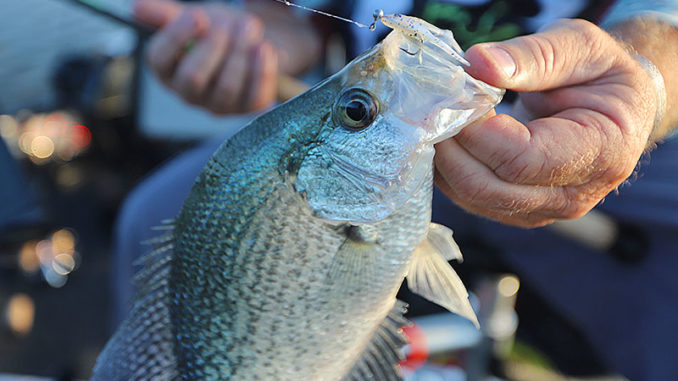
“Live Scope is a great tool, and I am in the group of anglers that loves it. But you can get yourself in some trouble when you see those fish on the screen and they just won’t bite. It’s tough to leave them, especially when you’re seeing them react, even in slight ways, to your bait every time you drop it down,” he said. “It’s easy to get caught up in it and lose track of time, and before you know it, you’ve wasted an hour, maybe two, without a single fish to show for it.”
Lock it down
When McAbee does ditch a school of fish that aren’t eating, he said he always tries to come back to that same school later in the day.
“The odds are with you that if they didn’t eat when you were there before, they’ll be hungry when you go back,” he said.
Another tool he uses in conjunction with Live Scope is the Spot Lock or Anchor Lock feature on his trolling motor. He watches his Live Scope until he is an easy cast away from the fish, sets his Spot Lock, then lets the trolling motor settle him into place. This allows him to focus solely on catching fish without having to worry about constantly steering his trolling motor to keep him on the fish.
But that’s not the only thing he’ll use his trolling motor for.
“If you pull up on some fish and they’re just not biting, it’s often beneficial to use your trolling motor to put your boat in position from the opposite direction than you first tried. Sometimes, the fish will turn on to something as simple as presenting your baits like that,” he said.
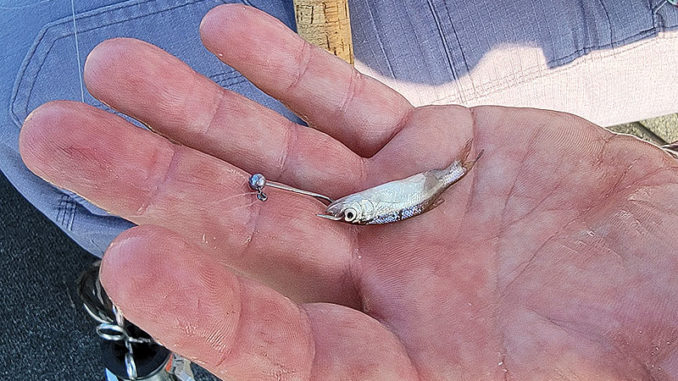
Small line, sensitive rods
With fish so finicky this month, McAbee said the diameter of line can also play a factor. He said many anglers make all the right moves, except for this one, which can often be the difference between either a good day and a bad day, or a good day and a great day of fishing. His line of choice is 4-pound test Slime Line monofilament.
“A lot of anglers like to use 6-pound test line, but that 4-pound Slime Line is less noticeable to the fish. Some days it might not matter too much, but 4-pound test is plenty strong enough, and it’s just one more way that anglers can tip the odds in their favor,” he said.
He spools that line onto a small spinning reel, which he attaches to a rod from Catch The Fever’s Precision Crappie series.
“These are really sensitive, strong rods that come in a variety of lengths. So if you are trying to stay a certain distance off the cover you’re working, the Precision Cast series offers rods that range up to 12 feet long, and with different handle and reel seat options. And they can handle lures anywhere from 1/64 ounce up to 1/4 ounce,” he said.

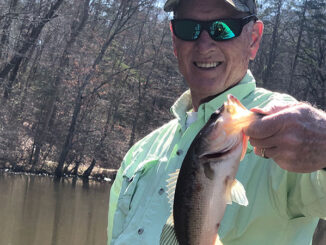
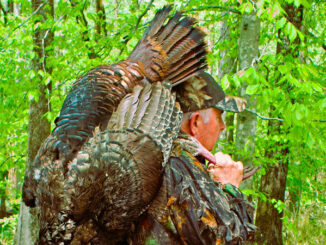
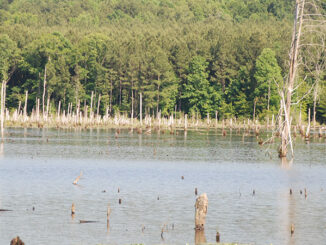

Be the first to comment